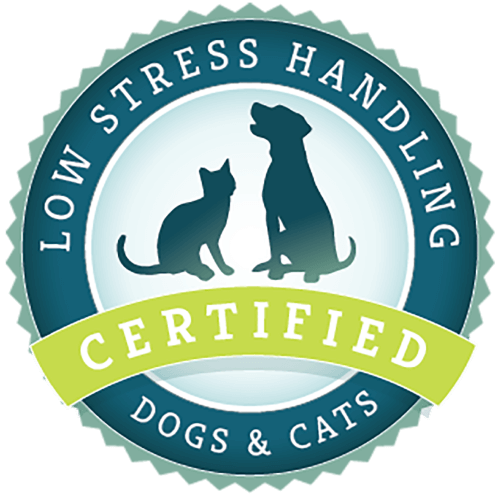What article are you looking for?
Category: I am a Trainer
Press Release 2022
CattleDog Publishing, VIN and the VIN Foundation Partner to Honor Dr. Sophia Yin’s Legacy The Low Stress Handling® Movement: How Sophia and Her CattleDog Started It All! Davis, CA: As the 8th anniversary of Dr. Sophia Yin’s death approaches, CattleDog Publishing, Veterinary Information Network, and the VIN Foundation, honor her memory by highlighting her life achievements and contributions. Her Read More
Teaching Your Dog to Love the Cone
Rocco modeling soft cone Rocco is modeling a soft-sided lion-themed cone. These soft collars are cute and more friendly but also not as aversive as many of the traditional cones.All photos courtesy of Sandra Robbins. Elizabethan collars (sometimes referred to as “cones of shame”) are necessary tools to keep pets from licking a surgical site, wound, or hot spot; chewing off bandages or splints; or scratching their ears or face. By desensitizing your dog to wearing a cone, it will be less stressful for your pet if and when they need to use one. Several types
Teaching Chin Rest to Dogs
Your dog can learn to target a chin rest to your palm as a stationary position, on a walk, target on a towel, or the arm of a wheelchair for petting in therapy work. Dog resting chin on open hand To prepare for training have high-value soft treats, and identify a comfortable height and position for both animal and trainer, such as a rolled up towel on a chair. When teaching this behavior, it is important to keep your hands steady, so your dog is not nervous. Step 1: Stationary Chin Rest
Enrichment for Senior Dogs
What is Enrichment and Why is it Important for Senior Dogs? Enrichment is offering experiences and opportunities to animals to encourage healthy natural behaviors and enhance physical and emotional welfare. Enrichment is often broken into two broad categories: environmental and social. Environmental enrichment alters the animal’s space either by making changes to the environment itself or by adding novel items such as toys, feeding puzzles, exercise, and things to smell and explore. Social enrichment involves offering positive social experiences for the animal with people or other animals. Enrichment is important for all species of animals, including people! Sometimes we enrich
Resource Guarding in Dogs
What is resource guarding and why does it occur? Resource guarding is a relatively common behavior problem in dogs. It is defined as a dog using avoidance, threatening, or aggressive behaviors to retain control of food or other items in front of a person or other animal. Sometimes, the signs of resource guarding are subtle. In these cases, your dog may show avoidance behavior or mild signs of aggression and anxiety such as stiff or crouched body posture, pinned back ears, lip licking, and physically blocking access to the resource. The aggression may escalate to more severe and overt signs
How to Stop Pulling
Why do dogs pull when leashed? Leash pulling is a common complaint among dog owners. Why do they do it? The world is an exciting place full of new scents, sights, sounds, playmates, etc. Leash pulling is a self-reinforcing behavior, which means that when the dog pulls, they get to go where they want, which is not necessarily where you want to go. Since the behavior works, the dog is likely to continue doing it. What do you want instead? Picture what you would like your dog to do, instead of pulling. For most people, teaching their dog to walk

Low Stress Handling® Silver-Level Certification
Individual Certification at this level demonstrates to clients and employers the individual’s dedicated interest in Low Stress Handling®. Hospital Certification at this level demonstrates to clients and staff the hospital’s commitment to appropriately training staff in Low Stress Handling® methods.
Learn More
